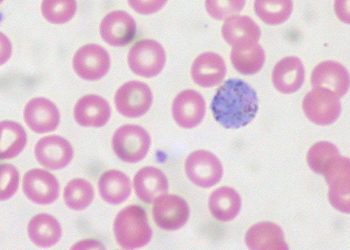Low adult vaccination rates due to financial barriers
Image: PD
1. From a survey of general internists (GIMs) and family practice physicians (FMs), the most common barriers of physician-provided adult vaccines were financial, most commonly a lack of insurance coverage or poor reimbursement.
Evidence Rating Level: 3 (Average)
Study Rundown: More than 95% of deaths due to vaccine-preventable illnesses are among adults, but their vaccination rates remain low. The goal of this study was to identify the barriers preventing physicians from providing vaccines to their adult patients. From a survey of general internists (GIMs) and family practice physicians (FMs), it was found that the vaccination status was assessed nearly universally for seasonal influenza; pneumococcal; tetanus and diphtheria (Td); tetanus, diphtheria, and acellular pertussis (Tdap); and zoster vaccines. However, it was less common to assess the need for other recommended vaccines, including hepatitis A; hepatitis B; measles, mumps, and rubella (MMR); human papillomavirus; meningococcal; and varicella vaccines. Furthermore, physicians were more likely to stock vaccines for those commonly assessed, and less likely to carry those less frequently assessed. Among these physicians surveyed, the top five perceived barriers were all financial, including poor or unknown reimbursement and lack of insurance coverage. The primary weakness of this study is that is limited to the responders of a survey, with only reported, and not validated, information. But overall, when primary care physicians neither stock vaccines nor assess the complete vaccination status recommended for adults, it is largely due to financial concerns.
Click to read the study, published today in the Annals of Internal Medicine
Relevant Reading: A Pathway to Leadership for Adult Immunization: Recommendations of the National Vaccine Advisory Committee
In-Depth [survey]: The survey was administered over the internet and by mail, with response rates from GIMs and FMs 79% and 62% respectively. From these, only 29% and 32%, respectively, asked the complete vaccination status of their patient, and only 31% of FMs and 20% of GIMs reported stocking all 11 adult vaccines that are currently recommended. In addition to the financial barriers to stocking and administering vaccines listed above, other prominent barriers included acute or preventative services taking precedence over vaccination, patients’ refusal of vaccines, and difficultly determining if a patient had already received the vaccine. The physician characteristics that were found most associated with financial barriers were a private or small practice, a practice in the Southern United States, and having a higher proportion of patients with Medicare part D (GIMs only). Among those physicians who did not stock the necessary vaccines, most reported that they did refer patients to commercial pharmacies or public health departments. From the survey, most physicians agreed that it was their responsibility to ensure their patients receive the recommended vaccinations, and they did not recommend vaccination by subspecialists due to lack of documentation. One limitation of the goals of this study is that universal stocking of vaccines may not be practical for all physician practices, and this study affirms that stocking alone is not sufficient to increase vaccination rates. However, this survey demonstrates that financial restrictions are potentially limiting adult vaccination by both GIMs and FMs.
More from this author: USPTF recommends tobacco counseling for adolescents by primary care physicians Peer-delivered education through social networking increases home-based HIV testing ACP recommends weight loss and CPAP for obstructive sleep apnea Lifestyle interventions can reduce type 2 diabetes among high-risk patients Home scoring system may prevent unnecessary pharyngitis clinic visits No evidence for the cognitive side-effects of statins Household firearm accessibility increases risk of suicide and homicide
© 2012-2014 2minutemedicine.com. All rights reserved. No works may be reproduced without expressed written consent from 2minutemedicine.com. Disclaimer: We present factual information directly from peer reviewed medical journals. No post should be construed as medical advice and is not intended as such by the authors, editors, staff or by 2minutemedicine.com. PLEASE SEE A HEALTHCARE PROVIDER IN YOUR AREA IF YOU SEEK MEDICAL ADVICE OF ANY SORT.






